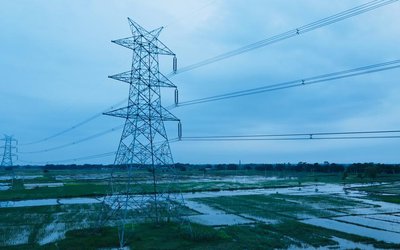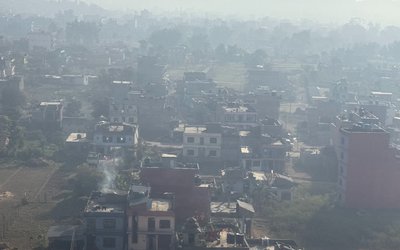The joint press statement released by the ministry of External Affairs, India on August 4, 2014 upon completion of the visit of Prime Minister of India to Nepal, Article 12 states, quote “The two Prime Ministers also underlined the need to resolve pending Nepal-India boundary issues once and for all. They welcomed the formation of the Boundary Working Group (BWG) to undertake the construction, restoration and repair of boundary pillars including clearance of 'Noman's land' and other technical tasks. They also welcomed the Joint Commission's decision to direct the Foreign Secretaries to work on the outstanding boundary issues, including Kalapani and Susta receiving required technical inputs from the BWG as necessary. The Indian side stressed on early signing of the agreed and initialed strip maps of about 98% of the boundary. The Nepalese side expressed its desire to resolve all outstanding boundary issues.”
This statement reveals the following at the minimum and that both Nepal and India have agreed to them on the date when the press statement was signed by the competent authorities of the two countries:
1 There are Nepal-India boundary issues that need to be resolved.
2 The boundary pillars demarking the international boundary (at least some of them) are either missing or need reconstruction, repair or restoration
3 The Noman’s land between the two countries requires clearing up, means it is being occupied by one or the other country or both the countries.
4 The outstanding boundary issues include the international boundary in Kalapani and Susta areas
5 The foreign Secretaries of the two countries to work to resolve any outstanding boundary issues that include Kalapani and Susta areas
6 The Indian side was willing to settle the boundary issues on step by step basis but the Nepalese side wanted to resolve all boundary issues at any time soon
The above-mentioned press release clearly states that there are disagreements in some of the areas along the international boundary between the two countries and that the Noman’s land is also being occupied by one or the other country. The statement is valid on the date it had been issued, or on August 4, 2014. Therefore, the annexation of KalapaniLimpiyadhura area by India on 2 November 2019 (Pokharel GS-Contemporary Political History of Nepal: Conspiracy Theory) without any consultation of the foreign secretaries of the two countries in line with the above-mentioned press statement gives the following message:
1 India does not honor agreements signed by competent authorities of the Government of India
2 The Indian movement to occupy Susta in line with their occupation of KalapaniLimpiyadhura can be expected soon
3 Nepal will be requested to vacate all areas in the Noman’s land presently being used by Nepal while India will continue to use such areas in the Noman’s land
4 India can be expected to occupy more areas of Nepal if such felt necessary by India and that Nepal should not protest….
Very interesting situation in 2024 when Nepal decides to use the present map of Nepal that naturally includes Kalapani and Limpiyadhura areas in one of the Nepali bank notes to be printed in the near future.Clear sign of frustration was visible on the Indian Foreign Minister’s face when he was seen to be protesting against it in the Indian media. And what is expected is the next cycle of Economic Blockade against Nepal, the fifth one since the Indian independence.
As I am writing this story, the Nepalese Government seems to have decided to back out from its original plan of printing the latest map of Nepal in the bank-note mentioned hereinabove. This means that the frustration seen on the face of the Indian foreign minister have had the right influence on the Nepalese Government and that Nepal does not have to face the threat of another economic blockade discussed above. The end-result may be considered as a “good news” for the general public at least temporarily.
Actually as far as I understand a colonial rule, Indian states seems to be under a colonial rule of New Delhi which often applies the principle of divide and rule within the states. The only difference I can feel is that the former was ruled from London and the present one rules from New Delhi. Therefore, it is high time for the Indian states to apply appropriate pressure on New Delhi to practice democracy over and above the elections and popular votes. My topic of discussion herein is on flood control in north Indian states of Bihar, west Bengal and UP with civil structures for flood water management in Nepal.
I think, India is deliberately doing such acts with Nepal that visibly are aimed at antagonizing the otherwise friendly Nepalese people a large number of whom are busy protecting Indian frontiers from the Indian enemies. The Indian Central Government’s policies of such kind tend to push the Nepalese populace against increasing Indian presence in Nepal so that the projects of mutual interest such as projects on flood control and flood water management can be pushed as far as possible and that the people on both sides of the border are deprived of direct benefits from such immensely beneficial projects mostly beneficial for India. At the same time, the central as well as the state governmentsat our neighborhood continue to blame Nepal for floods and droughts that hit the north Indian states of India naturally without any intervention from the Nepalese side. This also gives the government of India ample opportunities to blame Nepal for inclining towards China while all such inclinations are the result of shortsighted Indian policies and actions that adversely affect Nepal and the Nepalese people. And interestingly, the Indian press lamely follows such rumors.
As far as Nepal India relation at people to people level is concerned both Nepalese and the Indian people living near the international border are not only friendly but also have close intimate as well as family relationship and therefore have immense respect for each other. On the other hand, large number of Nepalese people from the hills and mountains are either engaged in the Indian defense force or are serving in various sectors in India. Similarly, many Indian nationals are associated with many skilled to semi-skilled jobs in Nepal. A large size of the workforce in Nepal Tarai comprises of Indian nationals. But myopic neighborhood policies of India and acts based on such policies such as construction of flow obstructing structures near the international border that are the cause for damming the water flow leading to inundation of fertile lands in the monsoon followed by their degradation due to sand deposition in Nepal are some of the deterrents directed against the Nepalese people by the Indian governments. Such acts could easily put the border-side Nepalese against the Indians but thanks to age old ties the border side Nepalese are not at all provoked.
Actually, there are innumerable dimensions of Nepal-India relationships. These relationships have evolved since time immemorial. Actually, they were not the relationships between Nepal and India as they did not exist then. Nepal existed in a different format but the present-day shape of Nepal has a history of a little over 300 years whereas India in the present form started its existence since 1947 after its independence as well as its division. But when we talk about Indo-Nepalese relationships, we mainly refer to people to people relationship that has matured over the last few centuries despite of many odds created by changes in rulers in India. Actually, the people to people relationship between Nepal and India is excellent to this day despite of many odds defined by Indian intension to annex Nepal in line with the Indian annexation of Sikkim (P K Yadav), 10-year long India backed armed insurgency in Nepal that ended with 12-point agreement in New Delhi, at least 4 cycles of economic blockade and many such irritants such as annexation of KalapaniLimpiadhura area from the Indian side as well as border disputes at over 70 places. These irritants and deterrents are at the government level which has a minimum impression on the people to people relationship. It clearly demonstrates the moral quality of our people.
But what India wants from Nepal is not clear though what Nepal wants from India is quite clear. However, what India should want from Nepal apart from the broad security phobia is regulated flood water for the overall prosperity of the Biharis, Bangalis and the north UP people. Nepal and the Nepalese people are ready to share its resources only if the benefits from them are also evenly shared. But most of the treaties on resource sharing with India seem to have the eating end towards Nepal and the milking parts towards India and the Nepalese people are scared of their repetition in future treaties with India. So what Nepal wants from India is very clear; it wants its promotion from small brother to younger brother in all bilateral dealings.
All Nepalese prime ministers visit India as soon as they are appointed to the good office whereas the Indian prime ministers seldom visit Kathmandu: size matters and therefore the larger of the two should create a better environment for business. It is not only the market and economy though economy plays an important role in nurturing relationships, more so in the present days.
Ambassador Ranjit Rae has divided his book titled “Kathmandu Dilemma-Resetting India-Nepal Ties” 10 independent chapters with epilogue as the eleventh. I would have retitled the book to “China dilemma-Resetting India-Nepal Relationship” but the book covers most of the dimensions of Nepal-India relationships mostly at the government level. Some of the important facts seem to have been deliberately left out, maybe due to being deterrents. I support Ambassador Ray in trying to maintain a positive diplomacy between the neighbors because negativity cannot create any positivity. From the Nepalese perspective,“India is the only business partner Nepal has”. It is defined not only by our geography but also by the decency of our people. India, on the other hand can have as many business partners as it wishes but it has to depend upon good relations with Nepal for the safety of its people from floods as well as for food security and prosperity of the large number of people through flood water management in Nepal.
Pokharel writes in water resources sector















